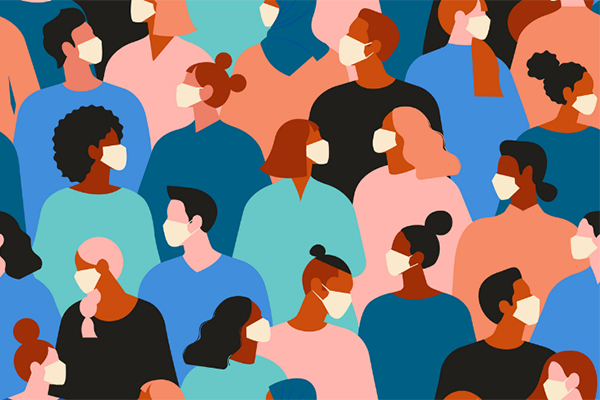Modeling the pandemic
WashU researchers use data to model better outcomes

Since early in the pandemic, researchers at the McKelvey School of Engineering at Washington University in St. Louis have been using data modeling to assess the effects mitigation measures might have on everything from the spread of transmission to the economy. Now, with the US and other countries again experiencing rising cases, their research is as relevant as ever.
Here are some takeaways:
Balancing health and the economy during the pandemic
Arye Nehorai is the Eugene & Martha Lohman Professor of Electrical Engineering in the Preston M. Green Department of Electrical & Systems Engineering. Nehorai’s lab, along with fellow researchers David Schwartzman, a business economics PhD candidate at Olin Business School, and Uri Goldsztejn, a PhD candidate in biomedical engineering at the McKelvey School of Engineering, use mathematical modeling to determine how best to strike the balance between economic stability and optimal health outcomes.
In December 2021, the group developed a predictive model for COVID-19 that considered, for the first time, its intercoupled effect on both economic and health outcomes for different quarantine policies. Their goal was to answer the question: “What is the most effective way to handle a country-wide quarantine for 76 weeks?”
The team looked at three scenarios:
- Strict isolation measures maintained throughout
- Rapid relaxation of isolation measures by younger people after the curve flattened
- Isolation measures slowly lifted for younger people after the curve flattened
What they found, in short, was that rushing to reopen would show some short-lived economic benefits, but be far worse in the long-term:
“If policymakers prioritize short-term economic productivity more [than limiting the spread of the disease], their quarantine policies may lead to many times more deaths and hospitalizations with minimal short-term economic gain.” – Arye Nehorai
Another key finding was one no one should be surprised to hear:
“People’s’ sensitivity to contagiousness is related to the precautions they take. It’s still critical to use precautions—masks, social distancing, avoiding crowds, and washing hands.” – Nehorai
Read more about the study’s methodologies and findings:
- Model predicts economic, public health repercussions of lifting quarantine before COVID-19 vaccine
- Modeling can help balance economy, health during pandemic
- Public policy and economic dynamics of COVID-19 spread: A mathematical modeling study
Social distancing – law of diminishing returns
In an “editor’s pick” paper published in the journal Chaos of the American Institute of Physics, researchers in the lab of Rajan Chakrabarty, associate professor in the Department of Energy, Environmental & Chemical Engineering, modeled the interplay between the duration and intensity of social distancing. They found that if social distancing strategies do not include contact tracing, isolation, and testing, then longer periods of social distancing are not necessarily more successful at slowing the spread of disease than shorter ones.
“Bending the curve using social distancing alone is analogous to slowing down the front of a raging wildfire without extinguishing the glowing embers.” – Rajan Chakrabarty
Another strategy for flattening the curve involves acting intermittently, alternating between strict social distancing and no distancing to alleviate the strain on hospitals as well as the strains on the economy and well-being imposed by longer-term distancing.
According to the model, the most efficient distancing- to no- distancing ratio is 5 to 1; one day of no distancing for every five days at home. Had society acted in this way, hospital burden could have been reduced by 80%, Chakrabarty said. Exceeding this ratio, the model showed a diminishing return.
No matter what strategy they looked at, one thing was clear:
“Had social distancing been implemented earlier, we probably would’ve done a better job.” – Chakrabarty
According to Chakrabarty, the modeling may be able to inform our actions if we find ourselves in a similar situation in the future.
“Next time, we must act faster and be more aggressive when it comes to contact tracing and testing and isolation. Or else this work was for nothing.” – Chakrabarty
Read more about the study’s methodologies and finds:
- Social distancing and COVID-19: A law of diminishing returns
- Dynamic interplay between social distancing duration and intensity in reducing COVID-19 US hospitalizations: A “law of diminishing returns”





